Mass Customization
The Foundation of Strategic Horizons & The Experience Economy
A few weeks ago, when looking at my calendar, it hit me – thirty years ago on October 26, 1992, Harvard Business School Press published my first book, Mass Customization: The New Frontier in Business Competition.
I’m not sure why that date has always stuck with me, but it did of course signify a meaningful moment in my life and a culmination of a series of work experiences.
More importantly, it laid the foundation for all the ideas and frameworks at Strategic Horizons. Mass Customization (the book) is the underpinning of the 26-year collaboration between Jim Gilmore and me, while Mass Customization (the system, business model, and paradigm) is the DNA of the Experience Economy.
From AS/400 to Future Perfect
Always being a computer nerd growing up, I joined IBM in the frozen tundra of Rochester, Minnesota, after getting an Applied Mathematics degree from the University of Wisconsin – Stout. I started off in very technical jobs but soon moved into management, focused on computer performance and competitive analysis.
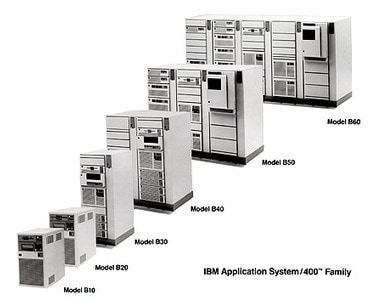
IBM Rochester made a bet-your-division decision to build the AS/400 minicomputer, and I was given the task of bringing customers and business partners into the development process of the system.
This tremendously impacted system development, as customer interactions enhanced the operating system while improving its quality.
Business partners converted over a thousand applications for availability on day one of AS/400 delivery – something that had never happened before its announcement in June 1988. These factors contributed greatly to IBM winning the Malcolm Baldrige National Quality Award in 1990.
My key personal learning from this project was that every customer was unique. We had designed the AS/400 to serve the large, general-purpose minicomputer marketplace, but that market simply did not exist. Customers wanted to use the system in different ways, connect it to different hardware, employ different applications, deploy different data, run at differing speeds and feeds, and so forth. They were unremittingly unique.

I sought the answer to this question when I moved into strategy, where our main task was to answer the question, “What now?”
My previous thoughts post Just a List of Stuff described the upshot of this work, but it was here that I read the 1987 book Future Perfect.
As I devoured this amazingly prescient book by Stan Davis, it was like the heavens opened up and the angels sang. His chapter on “Mass Customizing” – a term he coined – explained everything I saw when I worked with customers.
From Thesis to Book
After I successfully endeavored to get this into our system strategy, IBM sent me to MIT’s Sloan School of Management to get a Master’s degree in the Management of Technology. When I found out I had to do a thesis, I immediately said (to myself, and then to my MIT cohort, and then to my professors) that I would do one I could turn into a book, with the subject of course being Mass Customization.
So I studied everything I could on the subject, relating as many class papers to it as possible. When it came time to do the thesis I outlined an entire book and then set out to get as much done as I could while at MIT.
The thesis – Paradigm Shift: From Mass Production to Mass Customization – in fact, makes up the book’s first four chapters and appendix.
And a paper I did for my favorite professor, James M. Utterback, in December 1990 was spread throughout these chapters. The task became getting someone to publish the book and finish it while back at IBM.
Jim was kind enough to introduce me to his editor at Harvard Business School Press, Dick Luecke, who was looking for something in the “flexible manufacturing” space, and this fit the bill.
The editorial team was unsure how I would finish the book while working full-time at IBM, but I said “Let me worry about that….”
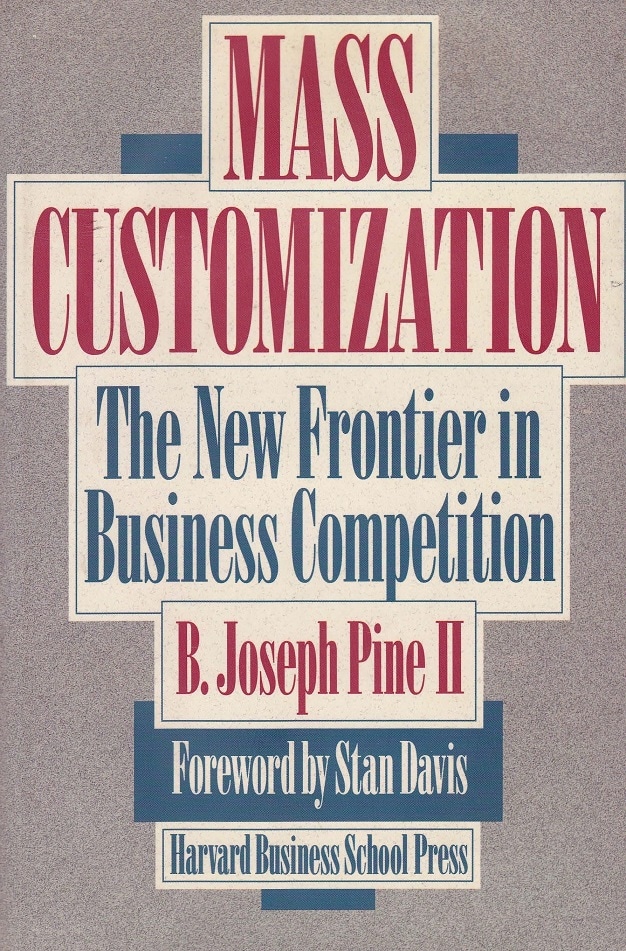
So while I initially moved into a software development headquarters job for IBM after graduation in December 1991, I, fortunately, was able to find an organization, the IBM Advanced Business Institute in Palisades, New York, that was looking for ideas that the newly minted IBM Consulting Group could use with clients. My manager, Al Barnes, gave me time to devote to the book while I was also learning to teach business concepts to the IBM clients who flowed through the ABI.
And so it came to pass that I finished Mass Customization: The New Frontier in Business Competition in May 1992, and it was officially published on, yes, October 26, 1992, by Harvard Business School Press.
From IBM to Strategic Horizons

Four or five months after publication I received a letter from some guy with CSC Cleveland Consulting Associates, who said his reaction on discovering the book was “Oh shoot – someone else has already written it!”
That consultant, one James H. Gilmore, included a recording (yes, videotape) of his own talk on the subject of Mass Customization highlighting “Aaron the shoeshine man”, an exemplar of personally attending to every client.
We found out we were going to be in Chicago at the same time in the spring of 1993, so we met and discussed our mutual love of the topic.
A few months after that, IBM – which was looking to shed people after Lou Gerstner took over as CEO – offered me (along with my wife, Julie, who also worked there) six months’ salary to leave the company.
We debated and prayed over the decision for weeks, and finally decided to do so, striking out on my own to see if I could make a living speaking, teaching, and consulting on Mass Customization. (Julie soon thought up the great name, “Strategic Horizons”.)
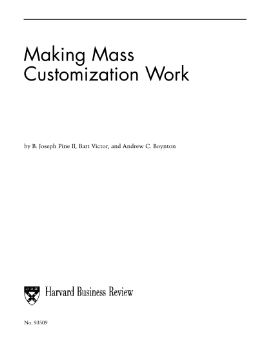
And two hours after we both signed our papers, I got a call from Steve Prokesch at the Harvard Business Review saying the journal wanted to publish the article on the subject two professors and I had submitted – and do so on an expedited pace for the September-October issue.
Editing it with Steve, who became my longtime editor at HBR and a friend, took up my entire last two weeks at IBM and then some, but resulted in “Making Mass Customization Work” with professors Bart Victor and Andy Boynton, with whom I worked at the IBM Advanced Business Institute.
This foundational article shows how businesses, industries, and even the nature of business competition have evolved from Invention to Mass Production, to Continuous Improvement, and finally to Mass Customization.
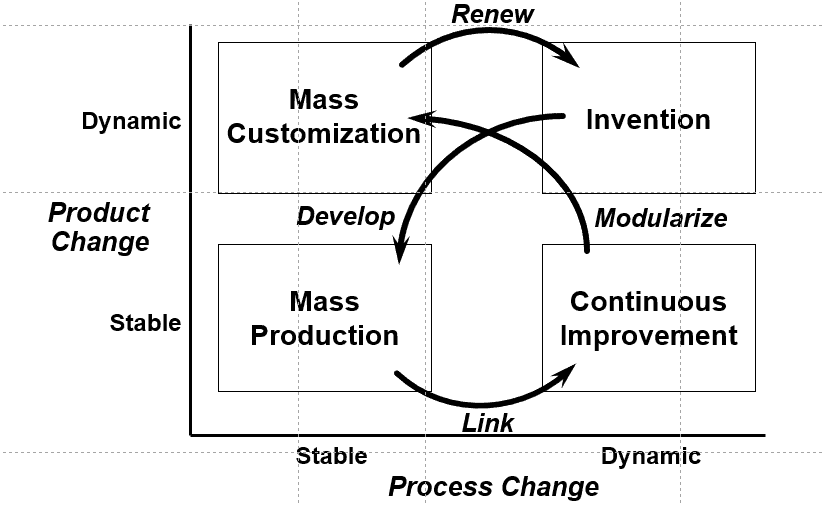
(Do read the article above, and then check out endnote 7-24 of The Experience Economy to understand the full power of the 2×2 framework on which this is based. Called the Product-Process Matrix and originally conceived by Bart and Andy, many people in the know call this THE 2×2.)
Going Out on my Own
With an HBR article under my belt, I knew I could make it on my own.
But I needed clients.
Who was that guy from Cleveland again? Oh, yeah, Jim Gilmore!
Soon CSC became one of my biggest clients as Jim, and I did some great work guiding CSC clients and began collaborating on ideas, with Jim funding some research on how companies were mass customizing in different ways.
This resulted in my third coauthored HBR article on the subject and the first HBR with Jim, “The Four Faces of Mass Customization.”
(Oh, the second one? That was “Do You Want to Keep Your Customers Forever?” with Don Peppers and Martha Rogers, which combined their wonderfully insightful ideas on 1:1 marketing with mine on Mass Customization.)
Strategic Horizons LLP is Born
As our client work, research, and writing progressed, Jim realized that he wanted to leave the world of big consulting firms, while I realized just how very much he contributed with his own thinking and how he made my ideas and frameworks better.
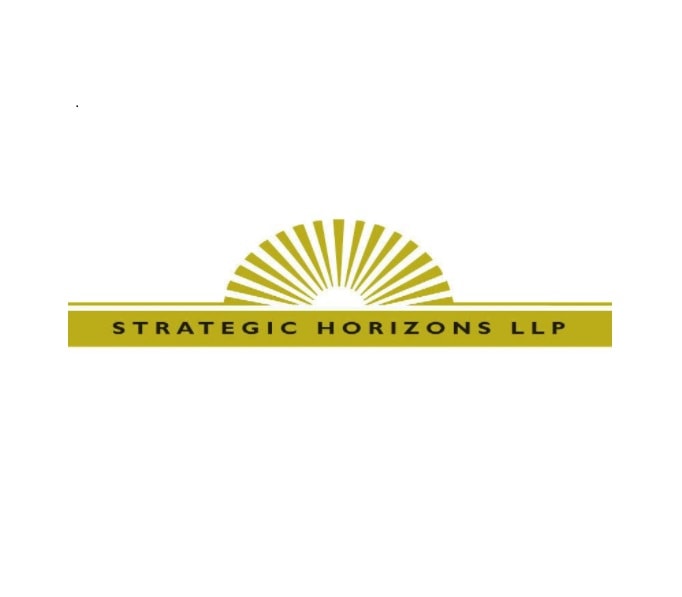
We decided to formalize our collaboration and in January 1996 birthed a different kind of firm, Strategic Horizons LLP – a thinking studio dedicated to helping businesses conceive and design new ways of adding value to their economic offerings.
Ever since, Pine & Gilmore’s meaningful purpose has been to discover what is going on in the business world, make sense of it, and then develop frameworks that first describe what is happening and then prescribe what companies can do about it.
In short, we’re Frameworks ‘R’ Us.
From Mass Customization to The Experience Economy
Even before our first HBR, and even before the founding of the firm, we were already working on the ideas, principles, and frameworks of the Experience Economy. I’ve previously written about how that idea was discovered in The History of the Experience Economy – and where we first wrote about it.
(Hint: it was not in our second HBR article together, “Welcome to the Experience Economy” in July/August 1998, as everyone seems to think.)
So I won’t repeat that story here, but just say that its genesis was indeed from Mass Customization, which again is the DNA of the Experience Economy.
To see that in great detail, after reading endnotes 7-24 of The Experience Economy head to Chapter 10 (page 255 of the 2020 re-release) and read the section “Ample Waves of Gain”.
There you will once again see the Product-Process Matrix – THE 2×2 – underlying the Progression of Economic Value, manifesting itself across commodities, goods, services, experiences, and transformations.
From Then to Now
Forgive the possible hubris, but I do not believe there is anything that Jim and I got wrong from those initial articles or the original 1999 edition of The Experience Economy: Work Is Theatre & Every Business a Stage.
Sure, some examples we used back then failed – that will happen whenever we have such an economic shift, with only the best figuring it out and thriving.
And there are some things in the book we never really talk about today.
We’ve also added several frameworks and exemplars in the 2011 Updated Edition and the 2020 re-release – but there’s no idea, principle, or framework that is no longer valid.
Oh were that the case with Mass Customization!
First of all, the very definition I gave to the concept was wrong, wrong, wrong.
I defined it as “variety and customization through flexibility and quick responsiveness”. I think I included variety there because I had so much data showing how variety was increasing greatly in industry after industry, assuming that as it increased the trend would naturally evolve into customization.
Now I understand that variety is the mass producer’s last-ditch effort to save the old Mass Production paradigm and actually gets in the way of shifting to Mass Customization.
Variety is still producing in advance in the hope that a customer will come along and say “That’s what I want.”
It is only customization if it is produced on demand for an individual, living, breathing customer. (Always put the “customer” in “customization”!)
The Best Definition of Mass Customization
The shortest and best definition of Mass Customization, which Steve Goldstein first uttered when we worked together in the 1990s, is efficiently serving customers uniquely.
It’s about giving customers exactly what they want at a price they are willing to pay, whether goods, services, experiences, or transformations (sorry, you can’t customize commodities by definition).
Modularity – modules + linkage system – is the key principle for efficiently serving customers uniquely.
And to quote my first HBR article, my coauthors and I described it this way: “The key to success is designing a linkage system that can bring together whatever modules are necessary—instantly, costlessly, seamlessly, and frictionlessly.”
Achieving those four adjectives in operations is like printing money.
A More Evolved Knowledge of Mass Customization
I also know much more about Mass Customization than I knew back then – and chapters 4 and 5 of The Experience Economy are a great place to see the ideas brought up to date.
One idea I’m still surprised took me so long to realize was extending the Typology of Modularity to a seventh type.
For in Chapter 8 of Mass Customization (p. 201 I remember) I listed six types of modularity, of which the most powerful was the sectional modularity of LEGO building bricks.
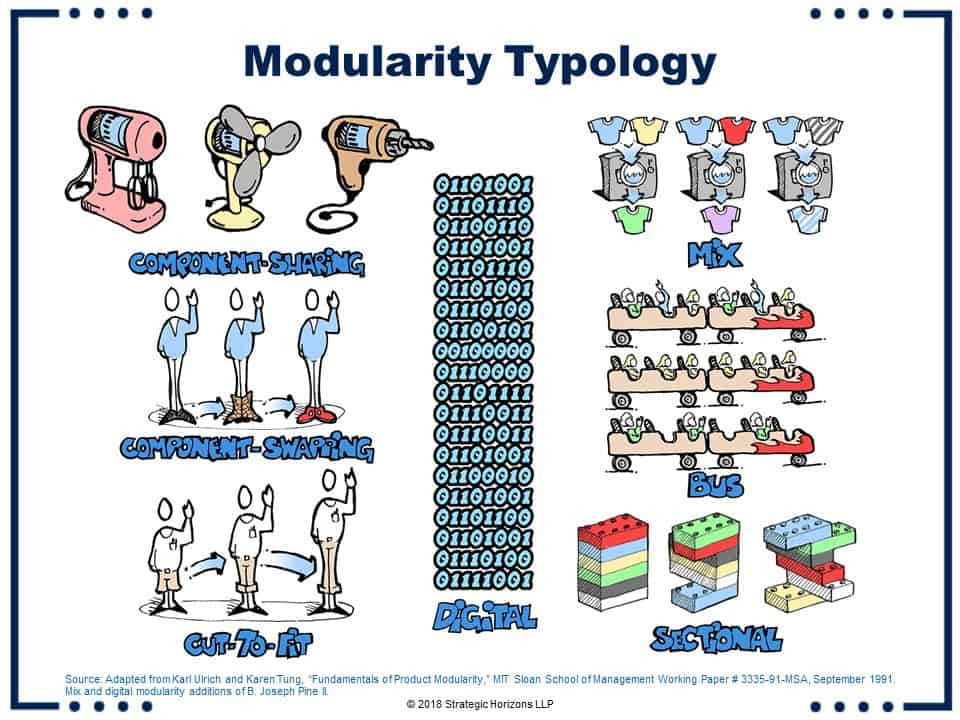
But for years – decades! – I’ve been saying that anything you can digitize you can customize.
For once, it enters the realm of zeroes and ones you can instantaneously change a zero to a one and vice versa.
It finally hit me that digitization is the seventh type of modularity – and the most powerful. I wrote more on this in The Power of Modularity, which I encourage you to read, noting, in particular, the type of modularity most appropriate for mass customizing experiences.
I’ve also long said that customization is the antidote to commoditization.
Commoditization is like the law of gravity, dragging you down year after year. Customization lifts you up! You cannot help but be differentiated – meaning not a commodity – if you work with individual customers to determine exactly what they need and then produce it for them on demand. (And I look forward to the day when I no longer have to say “individual customers”, where the phrase is recognized for the redundancy it is.)
I wrote about this in my most recent article on Mass Customization, published just a few months ago in June 2022 in Duke Corporate Education’s Dialogue journal, “Customization for All”.
It adds in some other ideas (including on digitization) and further relates Mass Customization to my Multiverse model in Infinite Possibility: Creating Customer Value on the Digital Frontier with Kim Korn. (If you want to learn more about the Metaverse and all the ways to fuse the real and the virtual, do give this book a read.)
Stop Marketing and Start ‘Customering’
One last thing. Let me quote a particularly pithy paragraph from the article:
Markets, as commonly conceived of in business, simply do not exist. They are a convenient fiction companies employ when they do not want to treat customers as the unique individuals they truly are.
CUSTOMIZATION FOR ALL – DUKE CORPORATE EDUCATION June 2022
A customer is not a market, or a segment, or a niche, or a generation, or a persona, or any other agglomeration of anonymous buying units of indeterminate size.
A customer is a living, breathing individual person – or, if you are a B2B company, an active, corporeal individual enterprise. You must therefore ascend to the proposition that all customers are unique; undeniably, unremittingly, unalterably unique.
And what that means is that we have to stop marketing and start customering.
The latter may not flow as trippingly off the tongue as the former, but just as marketing was once a brand-new concept in need of definition, explanation, and diffusing throughout the world of business, so too with ‘customering’ (a term that one day came trippingly off Jim’s tongue).
If this intrigues you –and it should – you can read more in my article “Customering: The Next Stage in the Shift to Mass Customization“ or watch this video of a presentation I did for Enel, “From Marketing to Customering”.
From 1992 to the Future
I recently returned from a 3-week, 4-country, 5-golf-round, 6-engagement-day trip to Europe, and the first engagement was a one-day workshop with an industrial manufacturer in Scandinavia.
It centered on Mass Customization and only on Mass Customization. I never even mentioned the Experience Economy once.
It was a joy to do, and I fully expect that had I never discovered the Experience Economy I would have made a nice living just on Mass Customization, the topic of my first book, published thirty years ago today.
But I am oh-so-glad the one led to the other. I think I made the right decision in leaving IBM and forming Strategic Horizons. Don’t you?



